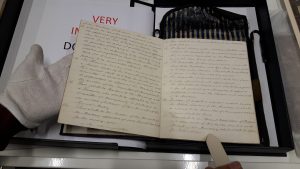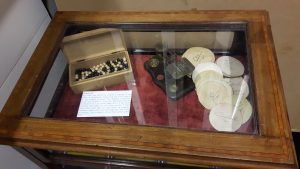
- Artist members could be either men or women.
- Artists who wished to become members, but were not considered advanced enough in their particular area of art were given the opportunity to study at the Academy free of charge.
- Artist members, on quitting the Academy were required to donate a piece of their own artwork to the Academy
- Artist members were required to live and practise as an artist of whatever discipline (remember the murals upstairs referring to painting, sculpture and architecture) within 10 miles of Bristol.
- There were to be annual exhibitions of member artists’ works and first prize would be called The Sharples Prize.

The idea of voting is not a new idea. Placing a white or a black ball onto a pair of balancing scales to determine which side is heavier and therefore which side has won, dates back millennia.
The term blackballed derives from this voting system. If a potential member of a club received more black balls than white then they were not allowed in; they were blackballed.
Voting still takes place now, but without the black and white balls.
Of particular interest: The concepts behind becoming a member of the Academy. Who decides and judges who can become a member is worth thinking about. Would those early academicians have voted for any of the pieces on display in 2016?